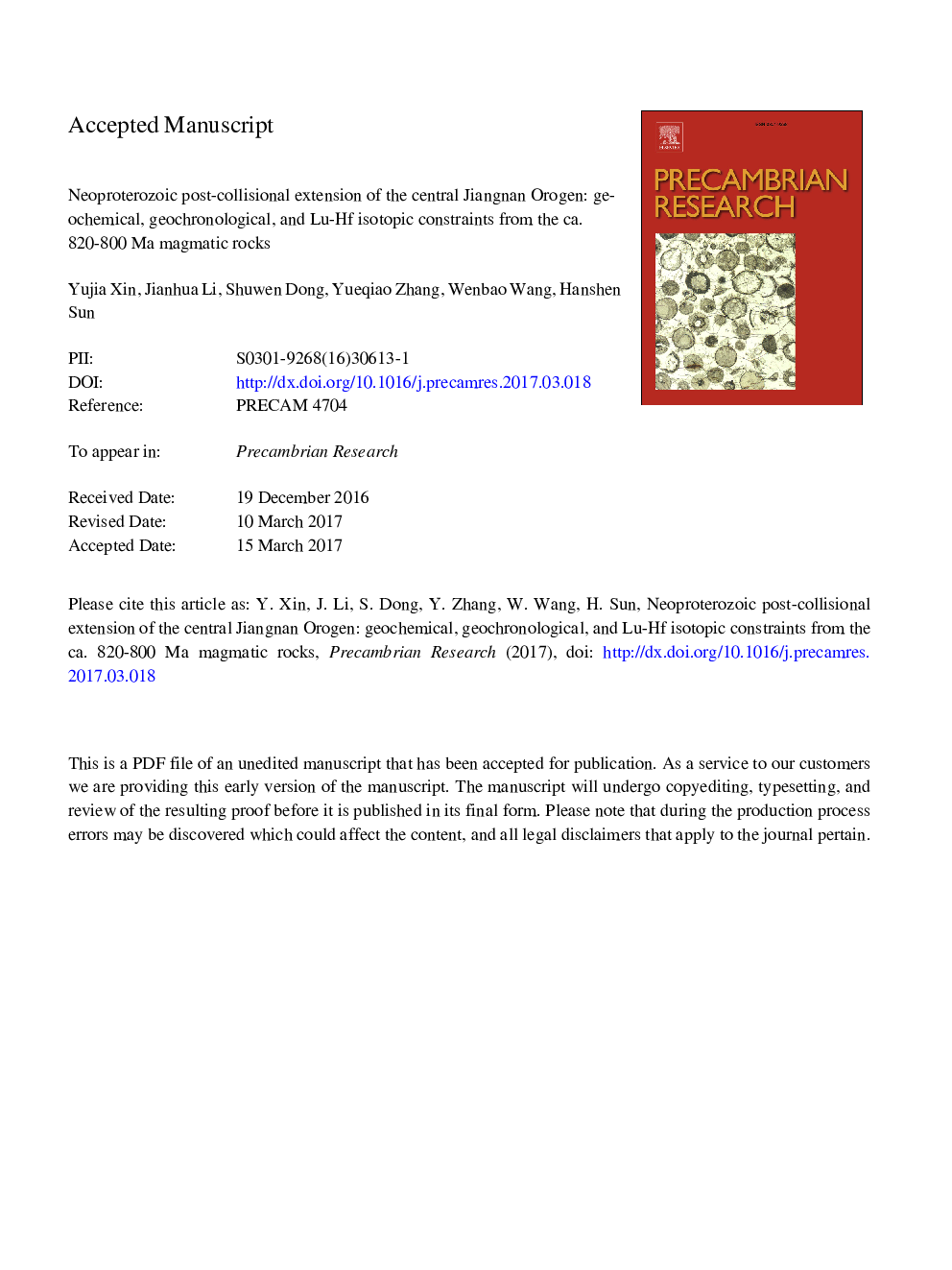| کد مقاله | کد نشریه | سال انتشار | مقاله انگلیسی | نسخه تمام متن |
|---|---|---|---|---|
| 5784845 | 1639581 | 2017 | 71 صفحه PDF | دانلود رایگان |
عنوان انگلیسی مقاله ISI
Neoproterozoic post-collisional extension of the central Jiangnan Orogen: Geochemical, geochronological, and Lu-Hf isotopic constraints from the ca. 820-800Â Ma magmatic rocks
دانلود مقاله + سفارش ترجمه
دانلود مقاله ISI انگلیسی
رایگان برای ایرانیان
کلمات کلیدی
موضوعات مرتبط
مهندسی و علوم پایه
علوم زمین و سیارات
ژئوشیمی و پترولوژی
پیش نمایش صفحه اول مقاله

چکیده انگلیسی
Neoproterozoic magmatic rocks in South China contain important information on evaluating crustal reworking during the Yangtze-Cathaysia collision and post-collisional extension. We present here geochemical, geochronological, and Lu-Hf isotopic data of a suite of granitoids and diorites from the Jiuling and Meixian plutons of the central Jiangnan Orogen. The granitoids display intermediate geochemical features between S-type and I-type granites. They exhibit arc-like patterns of REE and trace element partition, reflecting inheritance of juvenile arc-derived crust. Igneous zircons from the Jiuling and Meixian granitoids yield U-Pb ages of 822-819 Ma and 816-815 Ma, respectively. Inherited zircons from the granitoids commonly yield a major age population of 980-860 Ma, consistent with the time of the Shuangxiwu volcanic arc. The igneous and inherited zircons have highly variable εHf(t) values ranging from â9 to +12.2. We interpret the granitoids to have been generated by remelting and binary mixing of (1) juvenile arc-derived crustal material and (2) supracrustal material of the Shuangqiaoshan meta-sedimentary rocks. The previous crustal thickening achieved by the Yangtze-Cathaysia collision is a prerequisite for their generation. The two granitoids, together with regional 825-815 Ma S-type granites, indicate incipient post-collisional collapse of thickened crust, heralding tectonic switch from compression to extension. The Meixian diorites display arc-like geochemical characteristics, and yield zircon U-Pb ages of 805-804 Ma and neutral to positive zircon εHf(t) values (â0.1-+7.5). The diorites were generated by decompression melting of arc-derived lower crust, associated with asthenospheric mantle upwelling during continental rifting. Such rifting may be part of global Neoproterozoic rifting events that finally led to breakup of the Rodinia supercontinent.
ناشر
Database: Elsevier - ScienceDirect (ساینس دایرکت)
Journal: Precambrian Research - Volume 294, June 2017, Pages 91-110
Journal: Precambrian Research - Volume 294, June 2017, Pages 91-110
نویسندگان
Yujia Xin, Jianhua Li, Shuwen Dong, Yueqiao Zhang, Wenbao Wang, Hanshen Sun,